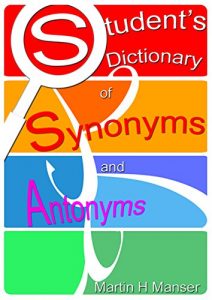As a student of English, you may sometimes find it difficult to know which word to use in a particular context. Or you may have used a particular word several times already in what you are writing, and so you want to use a different expression.
Most thesauruses or dictionaries of synonyms are not as helpful as they might first appear: to read a list of synonyms for a certain word is helpful only as far as it goes. This dictionary, however, goes beyond a mere listing of words with a similar meaning and helps distinguish them. The differences between similar words are shown by giving each one a definition and an example.
The definitions are intended to show the various shades of meaning of the group of synonyms. The examples show the context in which a word is used and which other words typically occur with each synonym.
At the end of many entries, antonyms (words with the opposite meaning to the entry word) are given. Where one of these antonyms is itself an entry word, then it is put in CAPITAL LETTERS.
Most thesauruses or dictionaries of synonyms are not as helpful as they might first appear: to read a list of synonyms for a certain word is helpful only as far as it goes. This dictionary, however, goes beyond a mere listing of words with a similar meaning and helps distinguish them. The differences between similar words are shown by giving each one a definition and an example.
The definitions are intended to show the various shades of meaning of the group of synonyms. The examples show the context in which a word is used and which other words typically occur with each synonym.
At the end of many entries, antonyms (words with the opposite meaning to the entry word) are given. Where one of these antonyms is itself an entry word, then it is put in CAPITAL LETTERS.



